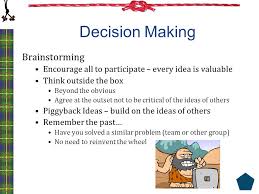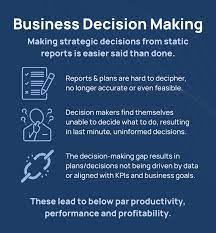Team Decision Making: Strategies for Success
Effective decision making is crucial for the success of any team. When a group of individuals come together to make decisions, it is important to have a clear process in place to ensure that the best possible outcome is achieved. Here are some strategies for successful team decision making:
- Define roles and responsibilities: Clearly define each team member’s role and responsibilities in the decision-making process. This will help avoid confusion and ensure that everyone knows what is expected of them.
- Encourage open communication: Foster an environment where team members feel comfortable sharing their thoughts and ideas. Encouraging open communication can lead to more creative solutions and better outcomes.
- Consider all perspectives: It is important to consider all perspectives when making a decision. Encourage team members to voice their opinions and listen actively to different points of view.
- Set clear goals: Define clear goals and objectives for the decision-making process. Having a clear understanding of what needs to be achieved can help guide the team towards the best possible decision.
- Use data and evidence: Base decisions on data and evidence whenever possible. This can help eliminate biases and ensure that decisions are made based on facts rather than opinions.
- Implement a structured process: Establish a structured process for making decisions, such as brainstorming, evaluating options, and reaching consensus. Having a clear process in place can streamline decision making and lead to more effective outcomes.
By following these strategies, teams can improve their decision-making processes and achieve better results. Effective team decision making requires collaboration, communication, and a commitment to finding the best possible solution for all involved.
Enhancing Team Decision-Making: Strategies, Benefits, and Solutions for Common Challenges
- How can teams improve their decision-making process?
- What are the benefits of involving a team in decision making?
- How can conflicts be resolved during team decision making?
- What role does leadership play in team decision making?
- What are some common challenges faced by teams in the decision-making process?
How can teams improve their decision-making process?
Teams can improve their decision-making process by implementing strategies that promote collaboration, open communication, and a structured approach to problem-solving. Encouraging team members to share their perspectives, actively listen to one another, and consider all available data and evidence can lead to more informed decisions. Setting clear goals, defining roles and responsibilities, and establishing a systematic process for evaluating options can also enhance the team’s decision-making effectiveness. By fostering a supportive environment where diverse viewpoints are valued and consensus is reached through thoughtful discussion, teams can strengthen their ability to make sound decisions that benefit the entire group.
What are the benefits of involving a team in decision making?
Involving a team in decision making offers a myriad of benefits that can lead to more effective and successful outcomes. By engaging team members in the decision-making process, organizations can tap into a diverse range of perspectives, experiences, and expertise. This collaborative approach not only fosters creativity and innovation but also promotes buy-in and ownership among team members, leading to increased morale and motivation. Additionally, involving a team in decision making can result in more well-rounded and thoughtful decisions, as different viewpoints are considered and evaluated. Ultimately, the involvement of a team in decision making can enhance problem-solving abilities, build stronger relationships among team members, and ultimately contribute to the overall success of the organization.
How can conflicts be resolved during team decision making?
Conflicts during team decision making can be effectively resolved through open communication, active listening, and a collaborative approach. It is important for team members to address conflicts constructively by acknowledging differing viewpoints and working towards a common goal. Encouraging respectful dialogue, seeking compromise, and considering alternative solutions can help teams navigate conflicts and reach consensus. By fostering a supportive environment where team members feel heard and valued, conflicts can be resolved in a way that strengthens relationships and leads to more effective decision making.
What role does leadership play in team decision making?
Leadership plays a crucial role in team decision making as it sets the tone for how decisions are made and implemented within a group. A strong leader can guide the team towards consensus, facilitate communication among members, and ensure that all perspectives are considered before reaching a final decision. Effective leadership can inspire confidence, encourage collaboration, and drive the team towards achieving its goals through well-informed and strategic decision making processes. It is essential for leaders to create a supportive environment where team members feel empowered to contribute their ideas and expertise, ultimately leading to more successful outcomes for the team as a whole.
What are some common challenges faced by teams in the decision-making process?
Teams often face several common challenges in the decision-making process. One of the main challenges is achieving consensus among team members with different perspectives and opinions. This can lead to conflicts, delays, and difficulties in moving forward with a decision. Another challenge is the presence of biases and groupthink, where team members may be influenced by preconceived notions or conform to the majority opinion without critically evaluating alternatives. Additionally, time constraints, lack of clear communication, and inadequate consideration of all relevant information can also hinder the decision-making process for teams. Overcoming these challenges requires effective communication, active listening, open-mindedness, and a structured approach to decision making that addresses diverse viewpoints and ensures thorough evaluation of options.




